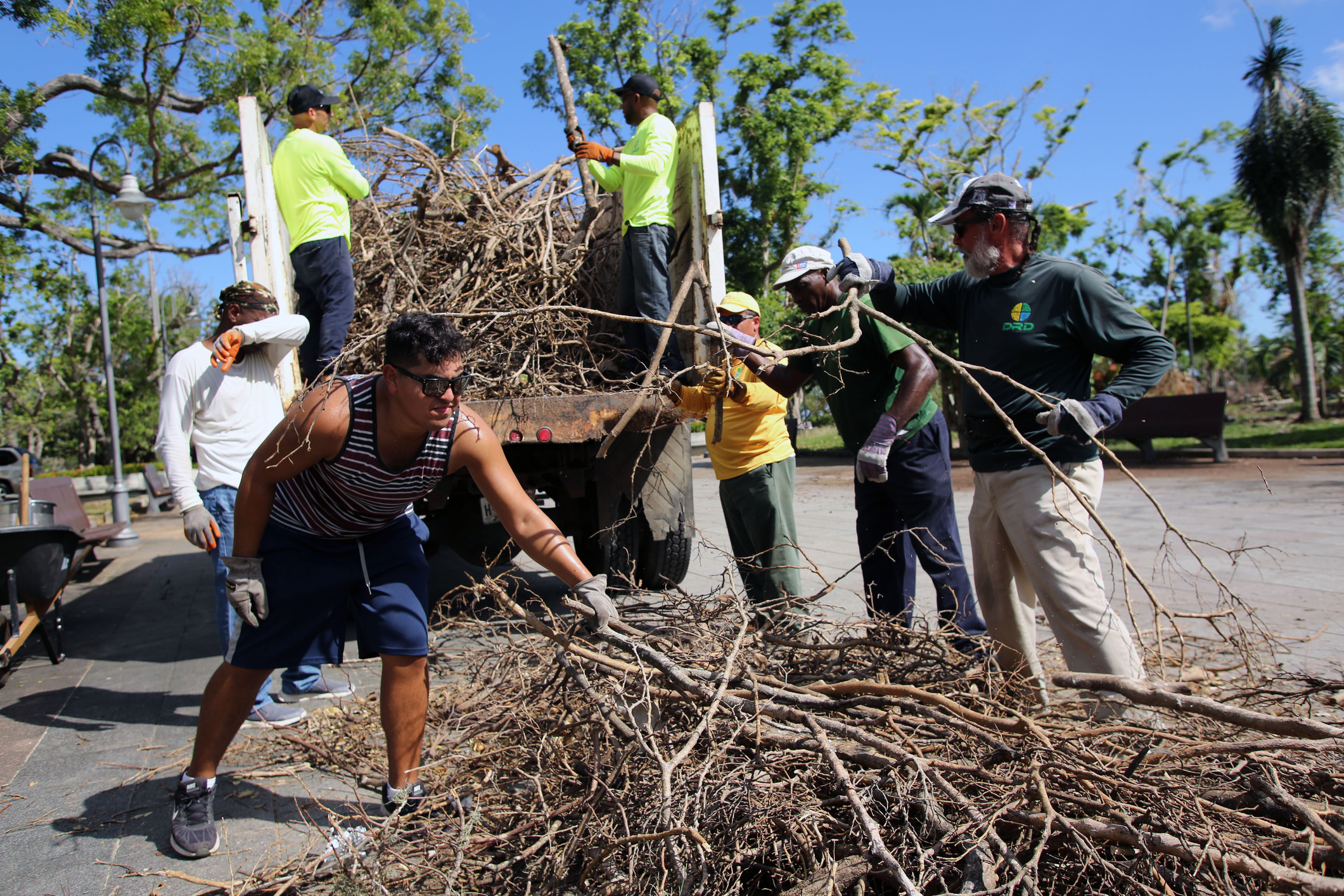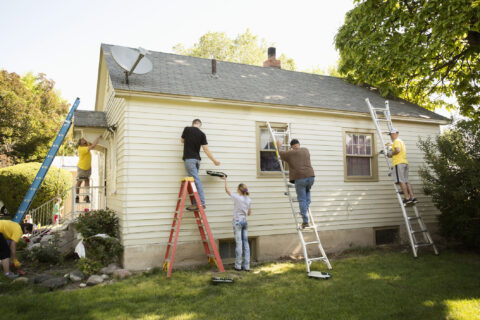Cities, towns and villages across the country are working hard to ensure that residents have economic opportunities by investing in stronger education and training pathways into high-quality jobs. At the same time, more frequent and intense extreme weather events like hurricanes, wildfires, flooding and extreme heat threaten lives, livelihoods, local industries and workforce development efforts that support residents’ ability to achieve economic mobility and advancement.
Extreme weather events may cause large scale destruction and disruptions to travel routes, electricity access, internet connectivity, childcare and other basic needs in addition to the mental toll of recovering from these events. The combination of these factors may make it difficult for residents to participate in education and training programs. These interruptions can cause adult students to lose valuable learning time, fall off track to complete credentials needed to advance in their careers or stop participating in programs before receiving needed skills and credentials.
Factoring climate resilience and emergency preparedness measures into workforce development strategies helps municipalities set residents up for success by accounting for potential barriers early on and mitigating the impacts of future extreme weather events. Here are a few key steps municipalities can take:
Make infrastructure resilient. Resilient infrastructure can help minimize disruptions and the number of “bounce back” days needed after an extreme weather event, prolong the lifespan of infrastructure, and produce additional benefits for human wellbeing and the climate. For example, 99 percent of community college students live off-campus and rely on and would benefit from climate resilient public transportation to participate in critical education and training programs to help advance their careers. Find guidance on using nature-based solutions and other proven practices to build resilient infrastructure in National League of Cities’ resources on Building Resilience Infrastructure for Healthier, Safer Cities, Elevating Complete Streets Policies with Green Infrastructure and Designing a Municipal Dig Once Policy.
Invest in microgrids. Microgrids are small-scale distributed energy grids that may be powered by solar and wind energy. They may operate independently or in conjunction with larger energy grids. During emergency events, decentralized energy grids can bounce back more easily, and microgrids are often paired with battery storage to provide continuous power. When the microgrid uses renewable energy as either the primary or backup source of energy, it can help reduce reliance on fossil fuels. While microgrids often present high upfront costs, evidence suggests that they provide economic value long term, in addition to being locally controlled and resilient sources of energy.
Invest in municipal broadband. When extreme weather events disrupt transportation routes to in-person meetings, having reliable, accessible broadband internet can help adult learners continue to participate in programs through virtual programming options (when virtual programming is a viable alternative). Access to broadband can also help residents receive consistent communication about where they can receive food, emergency shelter and other needed supports. Learn more about opportunities for creating local broadband authorities and removing barriers to expanding broadband.
Create partnerships to provide wrap around services. It is difficult for adult learners to be able to complete education and training programs when they struggle to meet their own or their family’s basic needs. Partnerships between city leaders, education and training providers and service providers are crucial to ensuring that residents have access to what they need (PDF) to continue participating in training programs. Municipalities can leverage mutual agreements with schools, institutes of higher education and community-based organizations to establish protocols for offering shelter, food and access to other basic needs. Partnering with service providers to enable resident access to physical and mental health support can help residents through challenging times.
Build a workforce prepared to address a growing need for green jobs. As industries and governments set climate goals and reckon with the impact climate change is having on quality of life, infrastructure and operations, the demand for “green jobs” workers is outpacing supply. Municipalities can bolster residents’ economic opportunities while meeting local workforce needs by investing in green jobs programs.
Leadership in Action: Rapid Responsiveness Through Partnerships in LaBelle, FL
Many communities across the country are already reckoning with climate change’s impacts on their workforce development programs and seeing the need to build flexibility into these programs.
LaBelle, FL (population: 4,966) is one such community. Mayor Julie Wilkins has worked hard to enable her residents to access greater economic mobility by creating stronger alignment between education and training programs and local industry through partnerships with institutions of higher education, the local Economic Development Council, adult education programs and collective impact coalitions.
Located in Southwest Florida, LaBelle is no stranger to hurricane season. Most recently, this rural community has been recovering from the impacts of Hurricanes Helene and Milton in Fall 2024. The city leveraged the critical partnerships it had built for workforce development to offer residents access to shelter, food and other basic needs. The partners also came together to create communication trees to rapidly disseminate important information about emergency protocols and available resources. These partnerships also helped minimize disruptions to residents’ ability to continue upskilling and reskilling by creating opportunities for them to continue their training and academic pursuits through programs at Florida Gulf Coast University (FGCU) and Florida SouthWestern State College. Specifically, FGCU created and offered entirely new free short-term training programs to reskill workers whose industries had been decimated by the storm.
As extreme weather becomes more pervasive, municipalities must prepare for disruptions to workforce training programs and the dislocation of workers due to the temporary long-term closures of entire industries. Integrating climate resilient protocols into local education and training programs — and building local climate resilience holistically — can help avoid disruptions, enable residents’ economic mobility and workforce success and meet municipalities’ workforce development goals.
Green Jobs Programs for Formerly Incarcerated Residents
Green jobs programs for formerly incarcerated residents help cities meet multiple goals. They are a much-needed investment in workforce development for local sustainability needs like building resilient infrastructure and increasing clean energy capacity. Explore more steps municipalities can take to support success.





